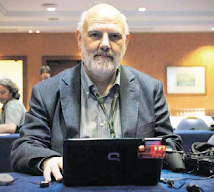
The pace of growth slowed from April, which followed a 0.3 percent contraction in March, the central bank said today. The annual economic growth rate fell to an average of 2.4 percent in the three months through May, from 6.5 percent in the same period a year earlier.
Chilean economists generally cut back their forecasts from over 3 percent after a June 30 government report showing a 2.4 percent contraction in industrial output in May. Similar results in June would leave the country on course for first-half growth of around 3 percent. Production seems in part to have slowed due to strikes, energy shortages and floods that destroyed crops and swept away road and rail access to Codelco's El Teniente copper mine.

June's activity data should be better than May's because heavy rain brought the drought that was causing a rise in the price of price power generated by hydro-electric dams to an end. Water-driven turbines provide as much as 70 percent of power in central and southern Chile. The electricity, gas and water industries probably didn't act as a drag on the economy in June, as they had in earlier months. The depreciation of the peso versus the U.S. dollar during June also helped exporters. The Peso declined 9 percent in June to hit a 10-month low of 527.89 per dollar on June 30.












No comments:
Post a Comment